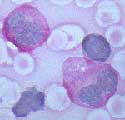Harvard researchers make laboratory breakthrough which may help lead to restoration of hearing loss.
By Barry Keate
Barry Keate, has lived with tinnitus over 40 years and has published 150+ research articles on numerous aspects of tinnitus. He is an expert on the condition and a well-known advocate for those with tinnitus.
A new report published in the Ear, Nose & Throat Journal (October, 2004) describes the significant progress being made in the growth of cochlear hair cells generated from stem cells in mice. While similar tests in humans are still years away, this breakthrough could bode as exciting news for individuals with hearing loss and tinnitus.
Stem cell research in the United States remains at the center of controversy and was a hotly debated topic during the recent election. It is not our intention to take a stand on this issue, but rather to continue to provide timely information concerning any progress being made on the frontiers of hearing health science.
The article was written by Karen Watters, MD and C. Eduardo Corrales, MD of the Department of Otolaryngology and the Program in Neuroscience at Harvard Medical School and the Eaton-Peabody Laboratory, Massachusetts Eye and Ear Infirmary, both located in Boston, MA.
More than 80% of all cases of hearing loss can be attributed to the degeneration and death of sensory hair cells. Hair cell loss is caused by exposure to excessive noise, aging, genetic mutations, autoimmune disease, and ototoxic medications such as aminoglycoside antibiotics.
The cochlea in mammals is not capable of repairing or regenerating hair cells. Certain non-mammalian vertebrates, such as birds, can regenerate hair cells through the proliferation of stem cells that are thought to reside in the sensory tissues of the ear. In mammals, attempts to regenerate damaged inner ear hair cells by genetic means have previously resulted in limited success.
 Stem cells are unique types of cells that have the ability to renew themselves over long periods of time. They can also differentiate into various kinds of specialized cells when they are appropriately stimulated. Adult stem cells are undifferentiated cells that are found in organ tissue and have the capacity to produce specialized cell types for that particular organ. Embryonic stem cells are produced from the inner cells of embryos. These cells can differentiate into any cells in the body.
Stem cells are unique types of cells that have the ability to renew themselves over long periods of time. They can also differentiate into various kinds of specialized cells when they are appropriately stimulated. Adult stem cells are undifferentiated cells that are found in organ tissue and have the capacity to produce specialized cell types for that particular organ. Embryonic stem cells are produced from the inner cells of embryos. These cells can differentiate into any cells in the body.
It has been postulated that a population of cells localized in the supporting cell layer in mammalian ears may contain progenitor cells that could lead to hair cell regeneration. Adult stem cells were recently found in the mouse utricle, a part of the inner ear involved in balance and motion.
Researchers at the Eaton-Peabody Laboratory have successfully isolated adult stem cells from the tissue of the mouse utricle. They have developed a technique to routinely isolate and propagate these stem cells in an artificial environment. The cells were maintained in a medium supplemented with growth factors. After eight days in culture, a number of these cells began to form floating colonies of cells called spheres. Spheres are cloned cell colonies generated from a single stem cell and are made up primarily of progenitor cells that are capable of differentiating into different cell types.
The next step was to graft the progenitor cells into the developing ears of embryonic chickens. The results of these animal experiments corroborated the artificial environment findings. The cells were successfully integrated into the developing chicken ear and gave rise to new hair cells.
Having established appropriate growth conditions for differentiation of adult stem cells into hair cells, the researchers attempted to determine if embryonic stem cells could also grow into hair cells. This was done by initiating the differentiation of embryonic stem cells into aggregates called embroid bodies.
Following the formation of these bodies, the cells were enriched with specific growth factors to form progenitor cells that expressed genes indicating the development of the inner ear. Growth factors were then withdrawn and the culture was continued in a defined medium. The process resulted in the differentiation of cells that expressed markers indicating hair cell growth.
This is the first report of the generation of hair cells from stem cells. These findings could eventually have significant implications for the hearing impaired and they further the possibility of developing a “cure” for some forms of hearing loss. There is much more research to be done toward developing clinically applied techniques for the treatment of hearing loss with stem cells. The next step is to integrate the growth of stem cell-derived hair cells with the recovery of neural synapses to complete the auditory pathway. As more information becomes available “Quiet Times” will provide ongoing updates.
